How To Create a Layered Chippy Paint Finish
Do you have furniture that you wish looked more like a worn vintage masterpiece? Learn how to reinvent any piece by creating a layered chippy paint finish.
We recently created a faux fireplace mantel surround for our bedroom. I wanted to achieve a layered, chippy paint finish and vintage look.
What I wasn’t quite sure about, was the technique I wanted to use to get that distressed, chippy appearance. After doing some research, I found bits and pieces from each technique that I could use for my own look. After making adjustments, I finally came up with a process that worked for my needs.
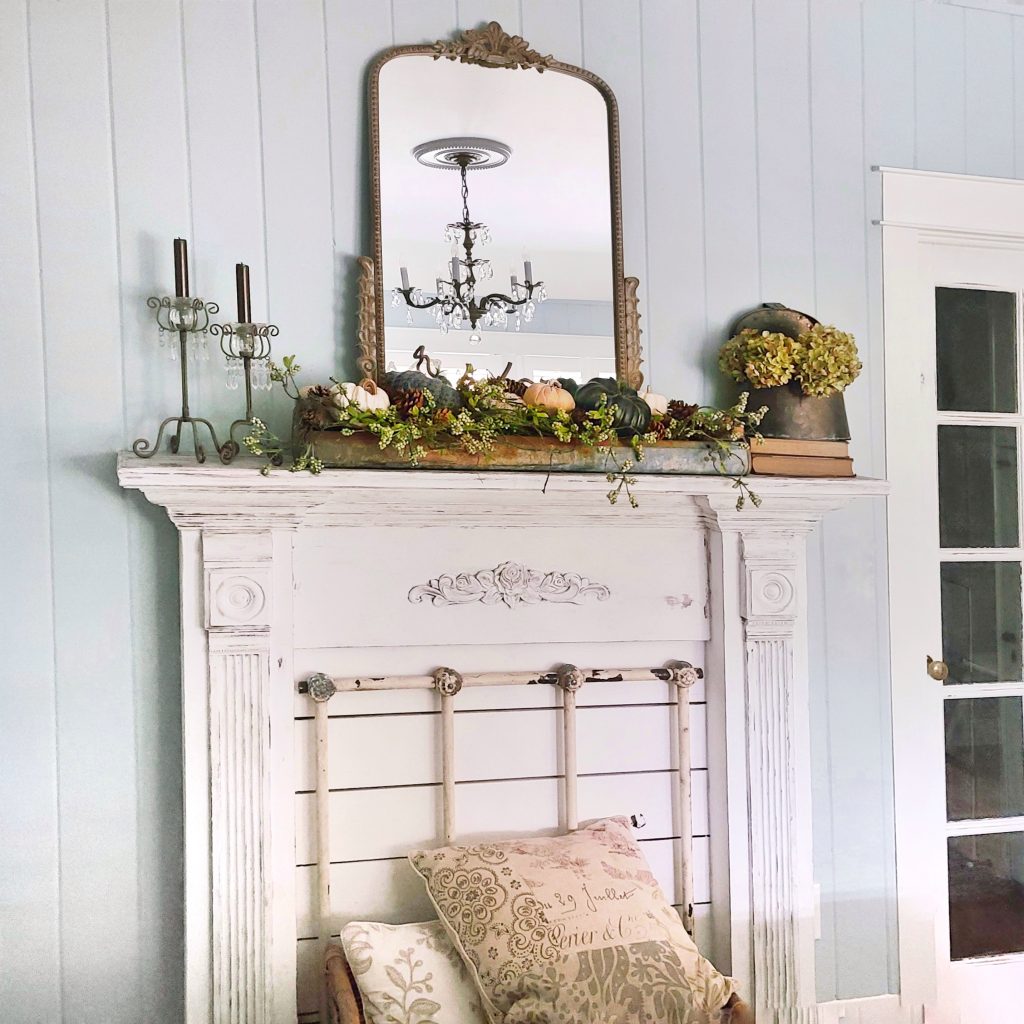
As an Amazon affiliate, I earn from qualifying purchases at no extra cost to you. My blog contains other affiliate links as well for your convenience. Click here to read my privacy policy.
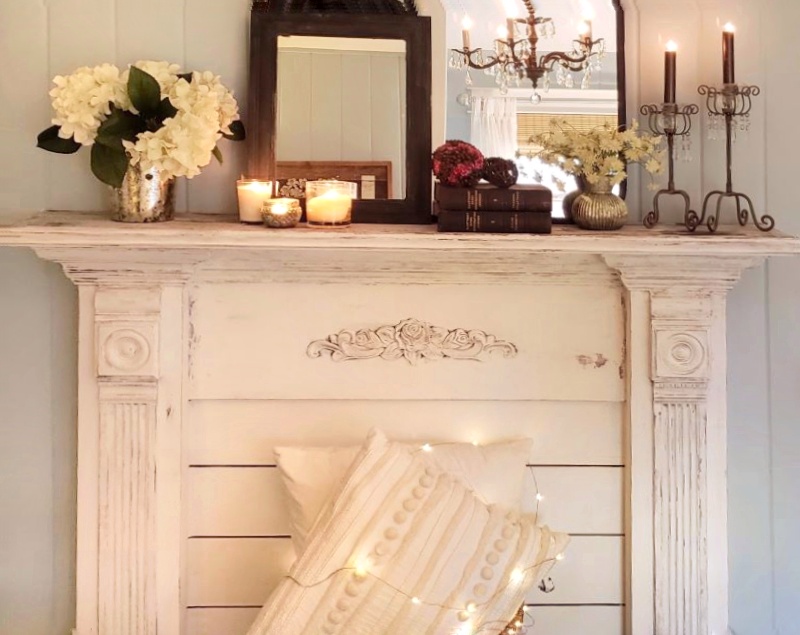
For anyone out there that isn’t familiar with “chippy”, it is a way of layering paint, to get a distressed look. The top layers look aged and are literally chipping off the furniture, revealing the paint and wood underneath.
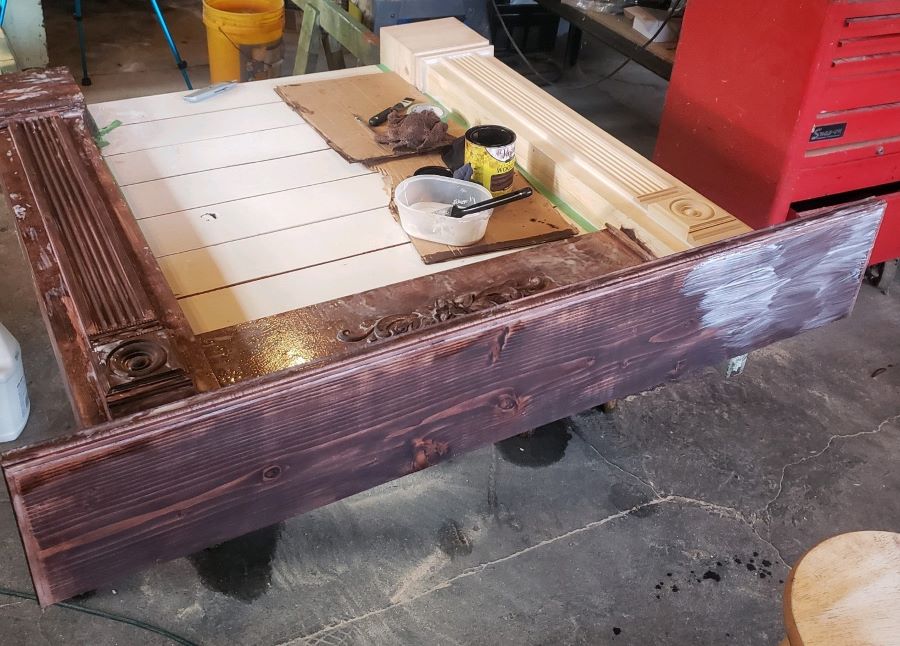
Supply List
- Dark Stain
- Gray Paint ( I used Rust-Oleum Chalked Paint Country Gray)
- White Paint ( I used Rust-Oleum Chalked Paint Linen White)
- Elmer’s School Glue
- Dark wax ( I used Annie Sloan Dark Wax)
- Sand Paper
Tools Recommended
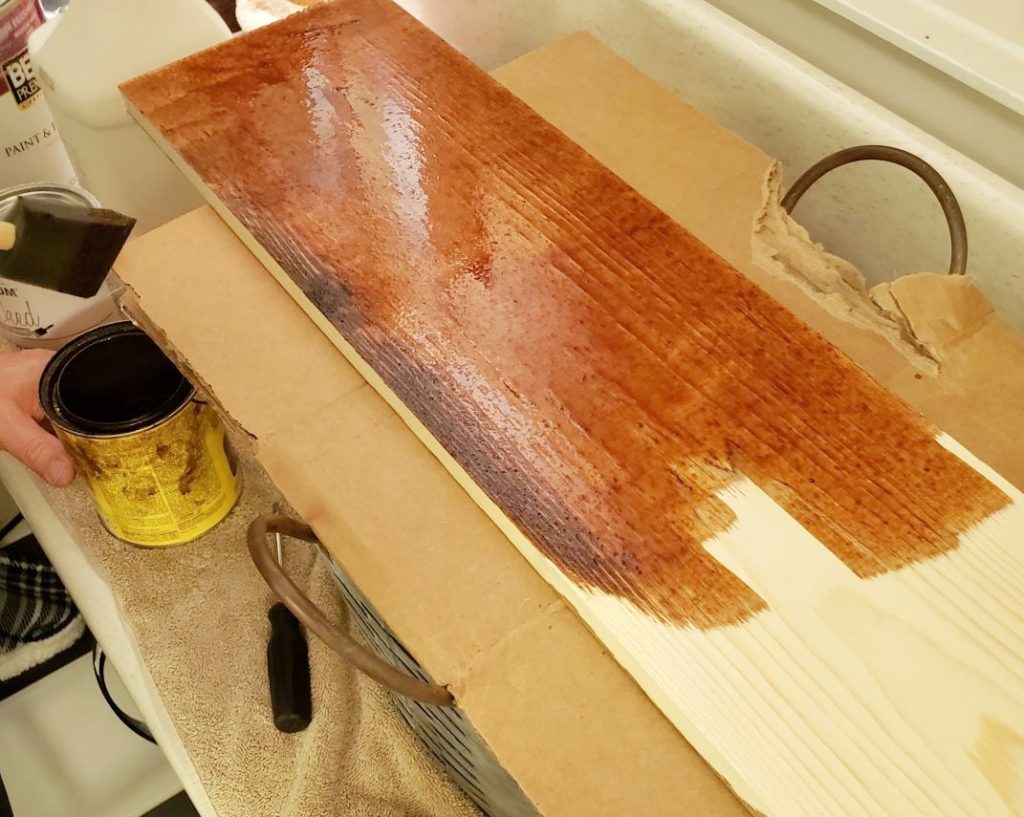
Steps to Creating a Layered Chippy Paint Finish
Step 1: Apply Stain or Sand Wood, Depending on the age of the Wood
Because I started with new pine wood, I wanted to use a dark stain. Then, when the paint peels away, the dark stain will show underneath.
If you are using a piece that is old and has many layers of paint, you will need to sand the piece first, and then wipe off the dust before staining. You can also skip this step, and apply your first coat of paint, followed by the glue application.

Step 2: Apply the Glue
Apply a layer of glue with a paintbrush to the areas you want to have a chippy look. I ended up using a foam brush. Covering the area with a thick layer of glue will create a bigger “crackle”.
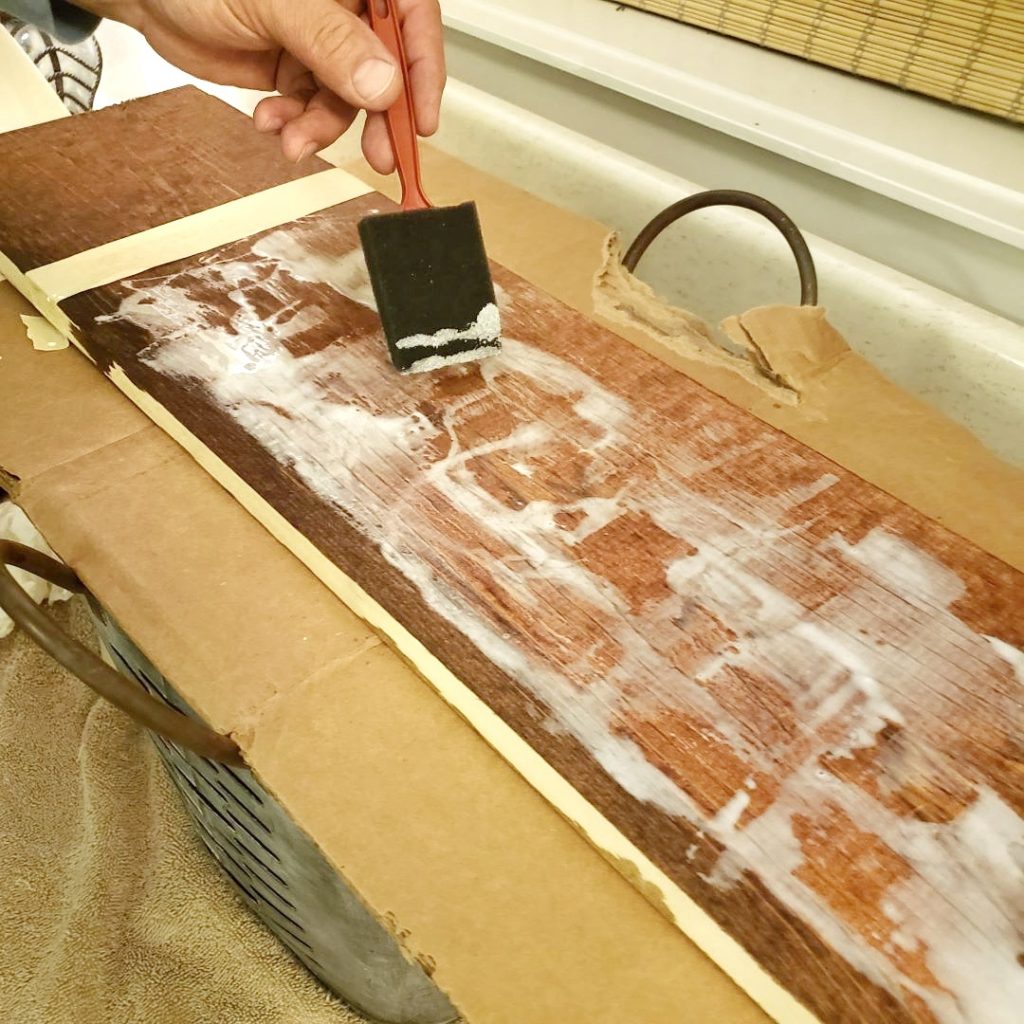
For a more realistic look, I tried to mix it up a bit. I applied thicker layers in some spots, and thinner layers in others. Regular school glue was used here, but you can use wood glue as well.
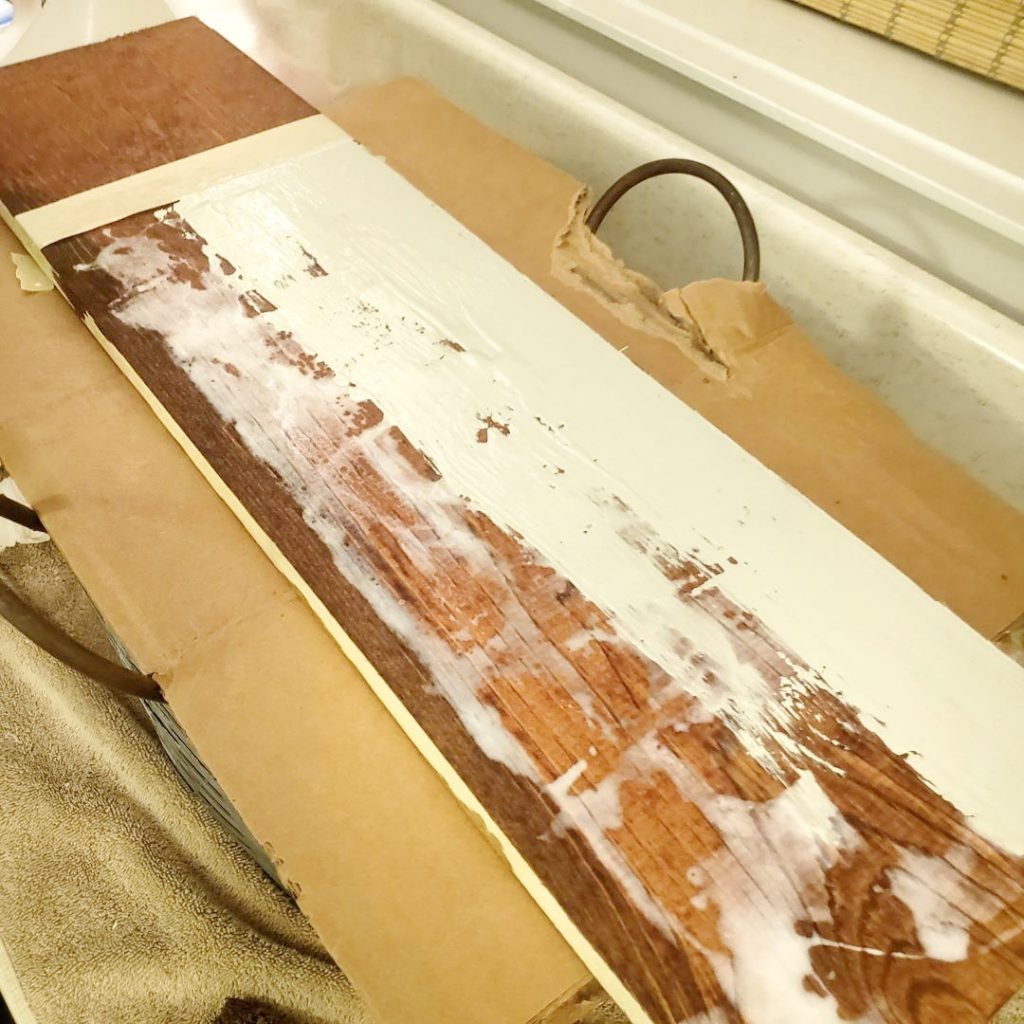
Step 3: First Coat of Paint
For the first coat of paint, I used dark gray colored paint to cover the dark stain and the layer of glue. This was so there would be another layer shown underneath the white paint layer.
Make sure you apply the paint when the glue is still tacky, after a minute or two. As the glue dries under the top coats of paint, the paint will shrink and crack.
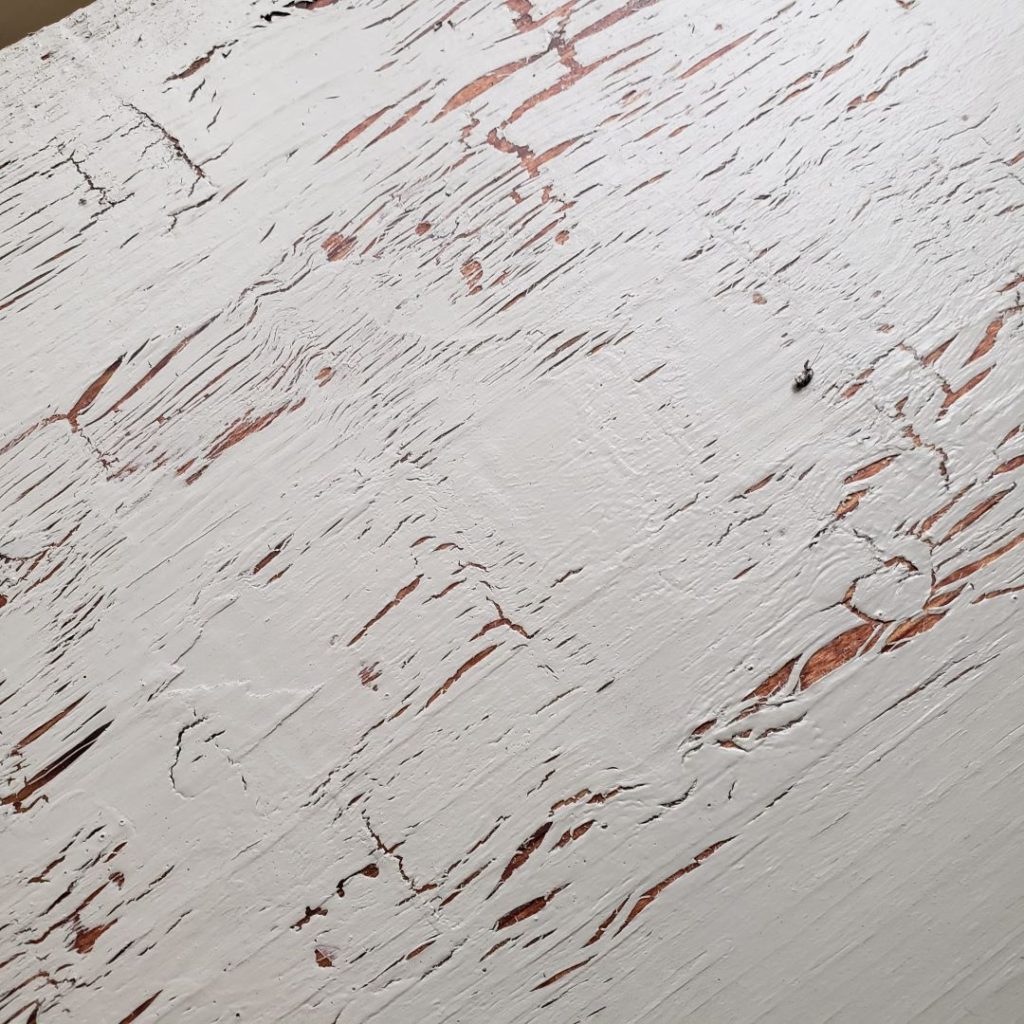
Step 4: Scrape Off the Paint For a Chippy Look
After the glue and paint layers have all dried, use a putty knife to scrape off the paint for a “chippy” appearance. Leave the areas you do not want to look chippy, alone.
I felt that I scraped off too much paint. So I added more paint to the areas I wanted to look less distressed.
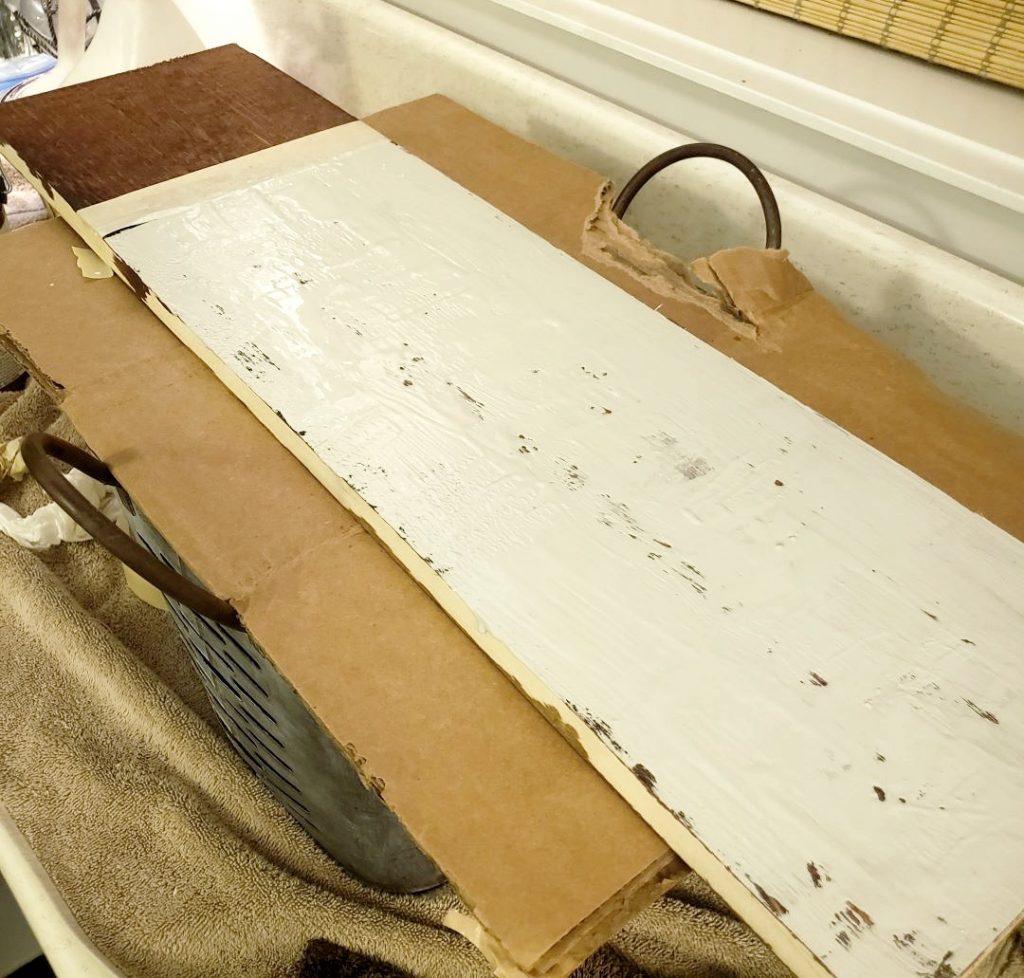
Step 5: Second Coat of Paint
Add the second coat of paint. I used a white chalk paint.
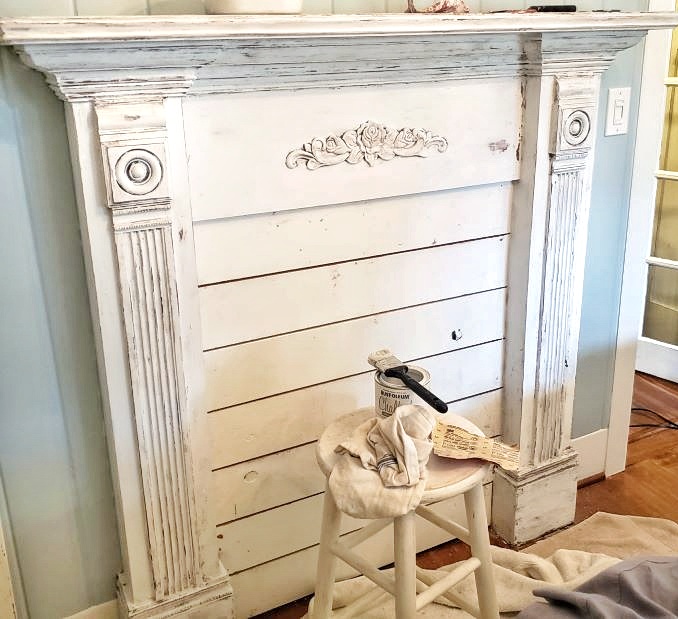
Step 6: Sand and Wax
If you want a more antiqued look in certain areas, apply some dark wax for a finished coat. Wipe any areas you want to wax, with a wet rag, to help from getting too much wax applied.
Use the wax sparingly. Sand any areas that you want to look older.
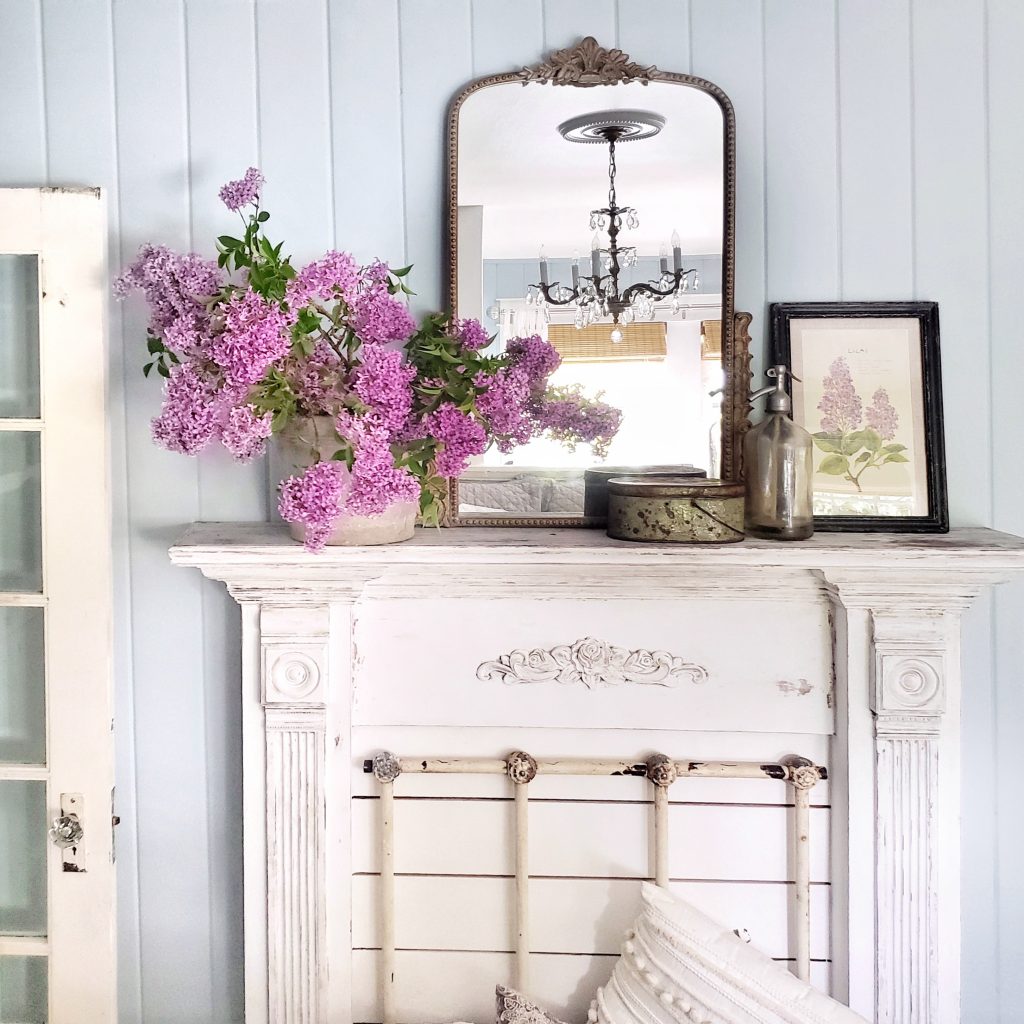
My mantel looks just as beautiful as the vintage mantels I found all across the country. I’m so happy with how it turned out!
If you are ready to turn your furniture into something that looks old and worn, I hope you will try to create this layered chippy paint finish, as I did here. Let me know how you did!
If you have any questions or additional suggestions, feel free to share them in the comments below. And be sure to share this blog post link with anyone who may find these tips useful.
Until next time,

Follow Me for More Inspiration
Shop my Amazon Storefront, my LTK sources, and my favorite home decor, garden, and lifestyle products. When you purchase from one of my links, I earn a small commission which helps me to continue sharing all the content you expect on my blog.
Be sure to follow me on Pinterest, Instagram, Facebook, TikTok and LIKEtoKNOW.it. Do you like gardening? Join my Facebook Gardening Tips & Tricks group

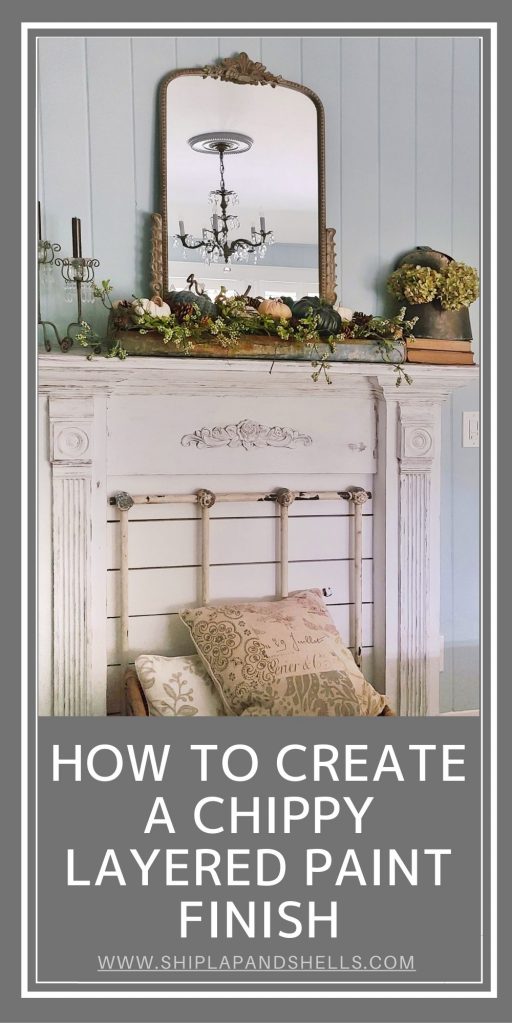

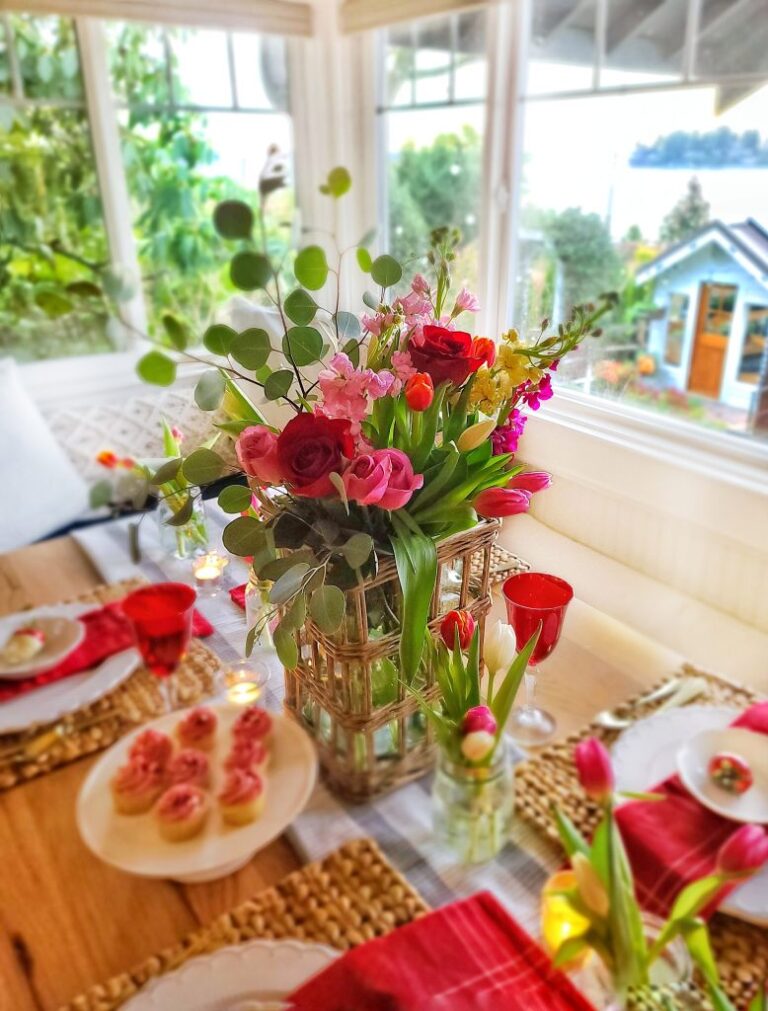
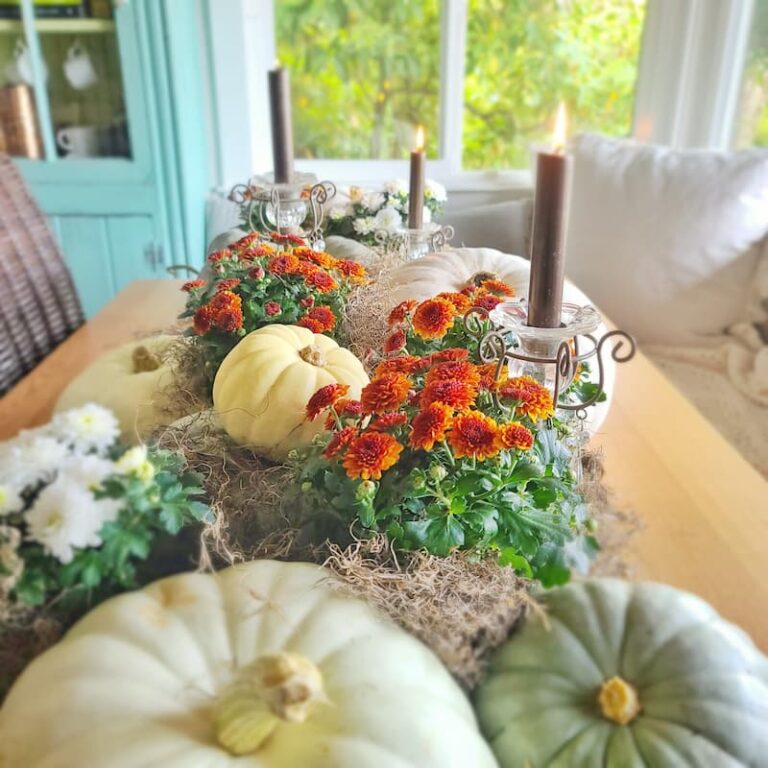
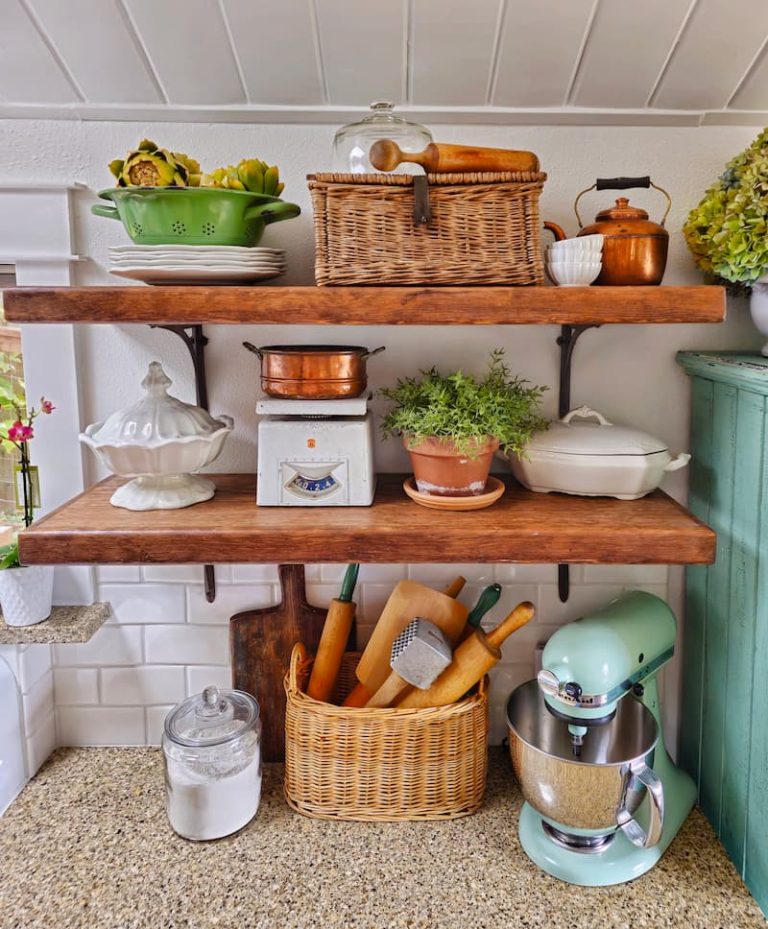
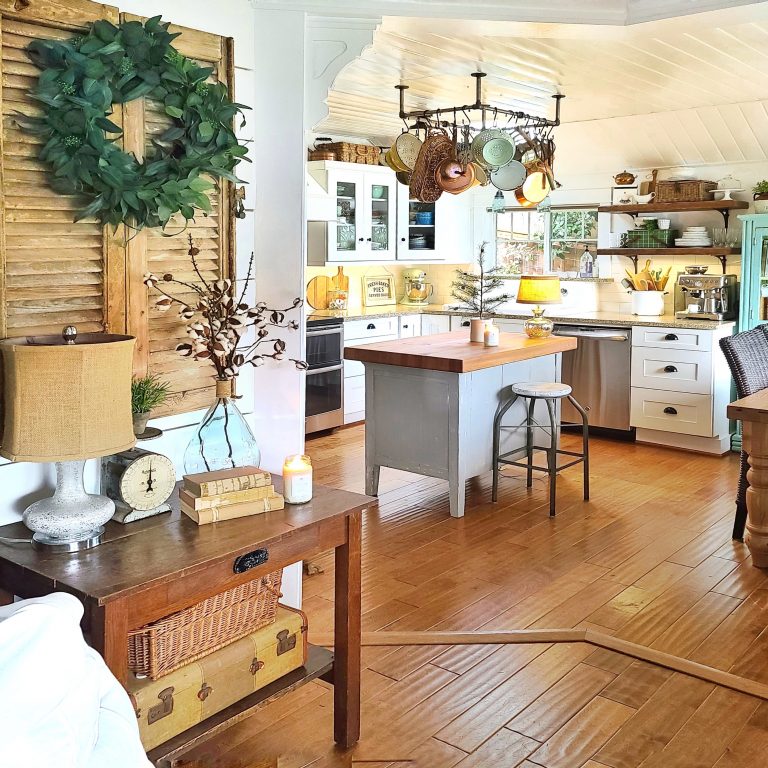
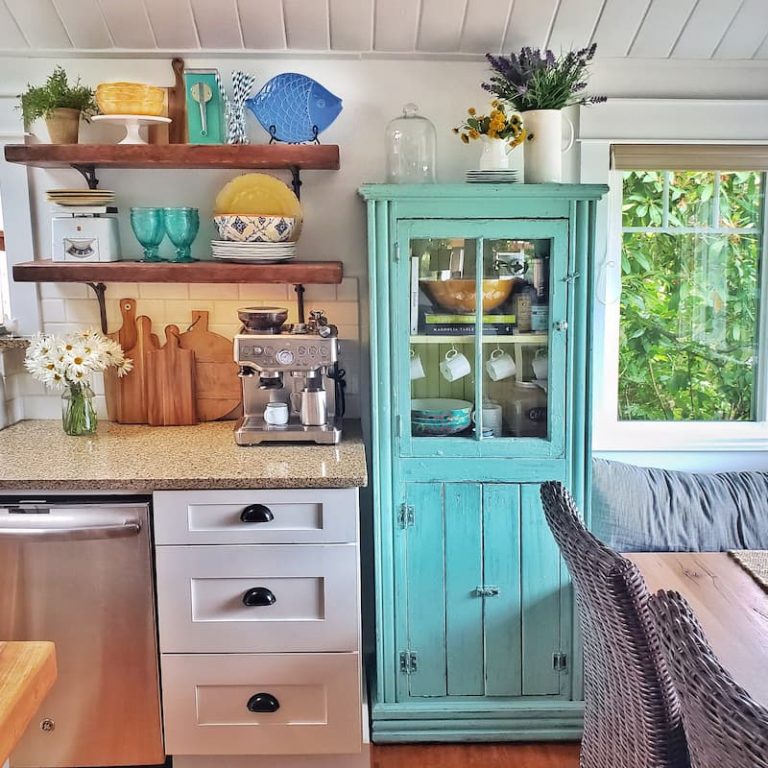
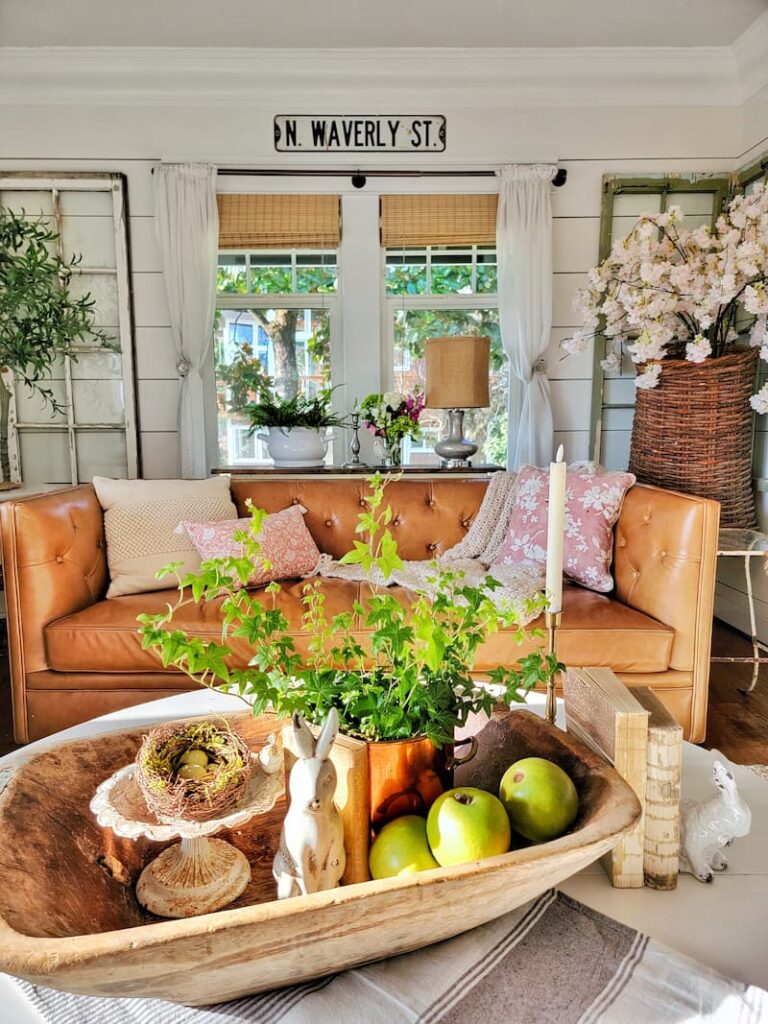
Wow! Looks great and I want to do this in my living room.
Your instructions make it seem easy enough!
It was actually really easy Debbie! I am not a DIYer usually, but I could even do this. I’m going to use it for my closet door too, if I ever get to it! Thanks for visiting my friend!